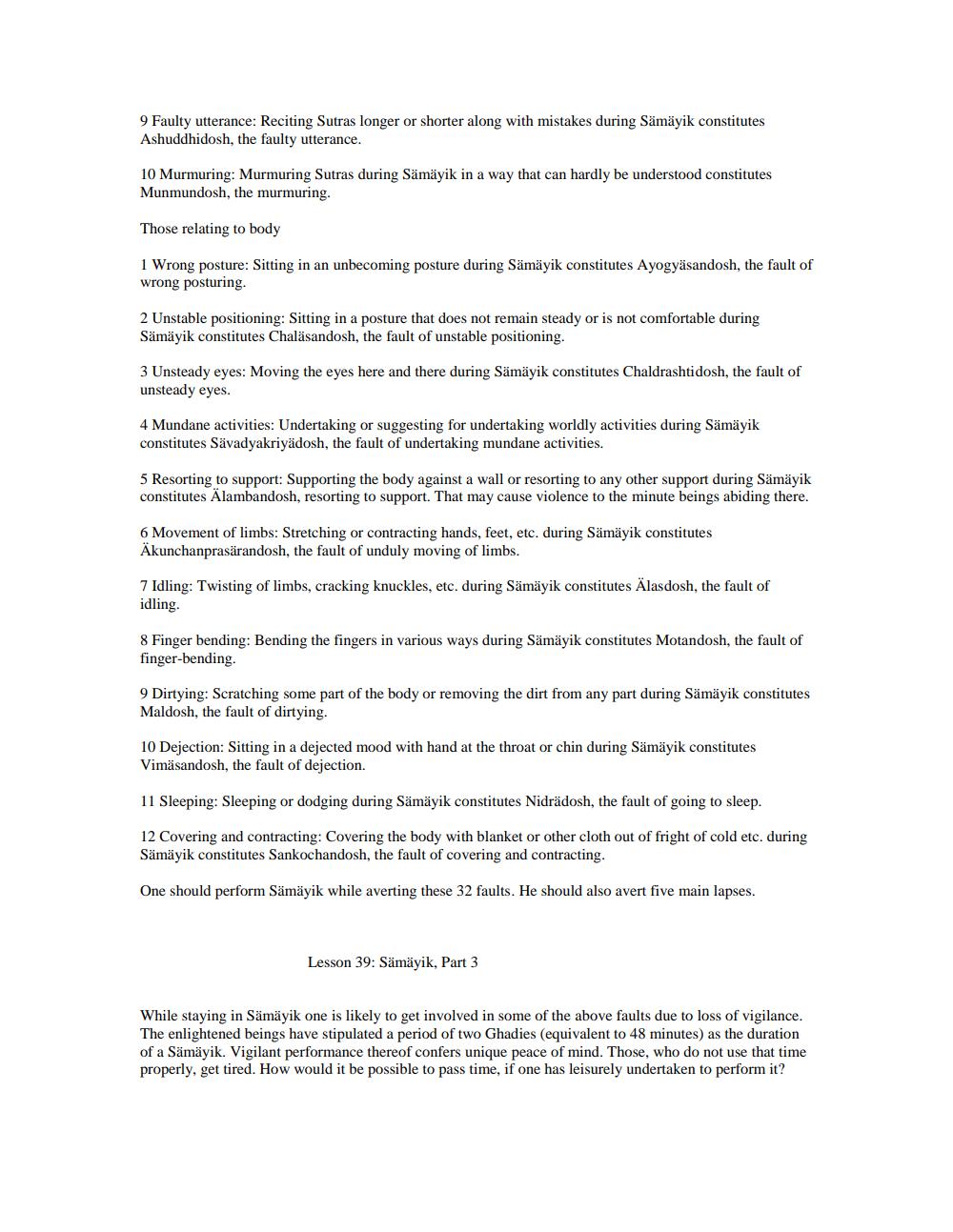________________
9 Faulty utterance: Reciting Sutras longer or shorter along with mistakes during Sämäyik constitutes Ashuddhidosh, the faulty utterance.
10 Murmuring: Murmuring Sutras during Sämäyik in a way that can hardly be understood constitutes Munmundosh, the murmuring.
Those relating to body
1 Wrong posture: Sitting in an unbecoming posture during Sämäyik constitutes Ayogyäsandosh, the fault of wrong posturing.
2 Unstable positioning: Sitting in a posture that does not remain steady or is not comfortable during Sämäyik constitutes Chaläsandosh, the fault of unstable positioning.
3 Unsteady eyes: Moving the eyes here and there during Sämäyik constitutes Chaldrashtidosh, the fault of unsteady eyes.
4 Mundane activities: Undertaking or suggesting for undertaking worldly activities during Sämäyik constitutes Sävadyakriyadosh, the fault of undertaking mundane activities.
5 Resorting to support: Supporting the body against a wall or resorting to any other support during Sämäyik constitutes Alambandosh, resorting to support. That may cause violence to the minute beings abiding there.
6 Movement of limbs: Stretching or contracting hands, feet, etc. during Sämäyik constitutes Akunchanprasärandosh, the fault of unduly moving of limbs.
7 Idling: Twisting of limbs, cracking knuckles, etc. during Sämäyik constitutes Alasdosh, the fault of idling.
8 Finger bending: Bending the fingers in various ways during Sämäyik constitutes Motandosh, the fault of finger-bending
9 Dirtying: Scratching some part of the body or removing the dirt from any part during Sämäyik constitutes Maldosh, the fault of dirtying.
10 Dejection: Sitting in a dejected mood with hand at the throat or chin during Sämäyik constitutes Vimäsandosh, the fault of dejection.
11 Sleeping: Sleeping or dodging during Sämäyik constitutes Nidrädosh, the fault of going to sleep.
12 Covering and contracting: Covering the body with blanket or other cloth out of fright of cold etc. during Sämäyik constitutes Sankochandosh, the fault of covering and contracting.
One should perform Sämäyik while averting these 32 faults. He should also avert five main lapses.
Lesson 39: Sämäyik, Part 3
While staying in Sämäyik one is likely to get involved in some of the above faults due to loss of vigilance. The enlightened beings have stipulated a period of two Ghadies (equivalent to 48 minutes) as the duration of a Sämäyik. Vigilant performance thereof confers unique peace of mind. Those, who do not use that time properly, get tired. How would it be possible to pass time, if one has leisurely undertaken to perform it?




